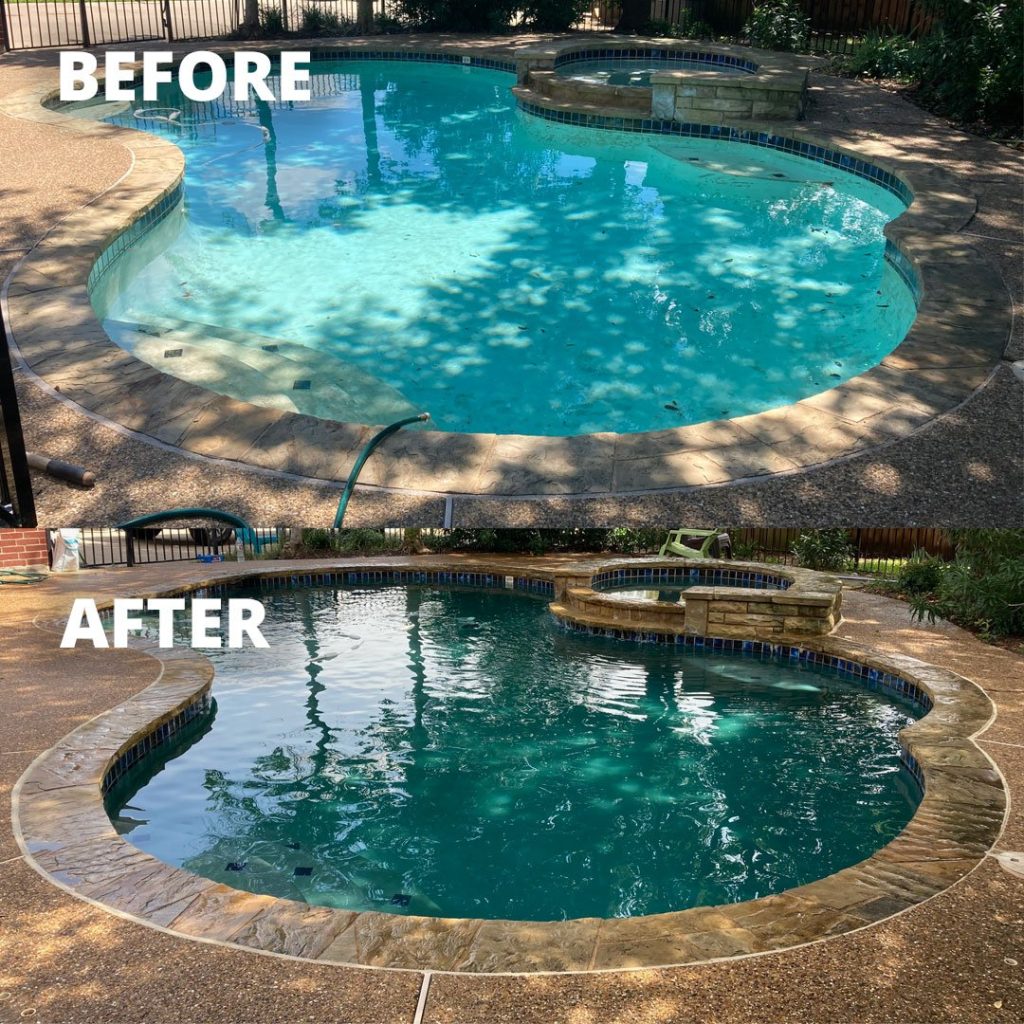Swimming pools are a wonderful addition to any property, providing a refreshing escape on hot days and a great place to relax and have fun with family and friends. However, to keep your pool in top condition and ensure its longevity, regular maintenance and occasional resurfacing are essential.

Credit: envirodek.com
Why Resurfacing is Important
Over time, the surface of a pool can deteriorate due to various factors such as exposure to the elements, chemicals, and general wear and tear. Cracks, stains, rough spots, and discoloration are common signs that indicate your pool needs resurfacing. Resurfacing not only improves the aesthetics of your pool but also enhances its safety and functionality.
Factors Affecting Resurfacing Frequency
The frequency at which you need to resurface your pool depends on several factors, including:
- Usage: Pools that are used frequently may require more frequent resurfacing than those that are used less often.
- Climate: Extreme weather conditions can accelerate wear and tear on the pool surface, necessitating more frequent resurfacing.
- Chemical Balance: Improper chemical balance in the pool water can damage the surface, leading to the need for resurfacing sooner.
- Quality of Previous Resurfacing: The quality of the previous resurfacing job can also impact how long it lasts before needing to be redone.
Recommended Resurfacing Schedule
While the exact resurfacing schedule will vary depending on the factors mentioned above, a general guideline is to resurface your pool every 5 to 10 years. However, it’s essential to inspect your pool regularly and look out for signs of wear and damage that may indicate the need for resurfacing sooner.
Signs Your Pool Needs Resurfacing
It’s crucial to keep an eye out for the following signs that indicate your pool may need resurfacing:
- Cracks: Visible cracks on the pool surface can lead to leaks and should be addressed promptly.
- Stains: Stubborn stains that do not respond to regular cleaning may require resurfacing to restore the pool’s appearance.
- Chalky or Rough Texture: A rough or chalky texture on the pool surface is a sign of deterioration and may indicate the need for resurfacing.
- Discoloration: Faded or discolored patches on the pool surface can detract from the pool’s aesthetic appeal and may signal the need for resurfacing.
Benefits of Timely Resurfacing
Timely resurfacing of your pool offers several benefits, including:
- Enhanced Aesthetics: A newly resurfaced pool looks fresh and inviting, enhancing the overall appearance of your outdoor space.
- Improved Safety: Smooth, crack-free surfaces reduce the risk of injuries and provide a safer swimming environment for you and your family.
- Extended Lifespan: Regular maintenance, including resurfacing, can extend the lifespan of your pool, saving you money on costly repairs in the long run.
- Increased Property Value: A well-maintained pool adds value to your property and makes it more attractive to potential buyers if you decide to sell in the future.
Choosing a Professional Pool Resurfacing Service
When it comes time to resurface your pool, it’s crucial to choose a reputable and experienced pool resurfacing service. Look for a company that has a proven track record of quality workmanship and uses high-quality materials to ensure a durable and long-lasting finish.
Before hiring a pool resurfacing company, be sure to:
- Check references and read reviews from previous customers to ensure their satisfaction with the service.
- Get multiple quotes to compare prices and services offered by different companies.
- Ask about the materials and techniques used in the resurfacing process to ensure a high-quality result.
- Discuss the timeline for the project and ensure that it fits your schedule and expectations.

Credit: www.nelsonpoolcompany.com
Frequently Asked Questions
How Often Should A Pool Be Resurfaced?
Pool resurfacing is typically recommended every 10-15 years, but it ultimately depends on the pool’s condition and usage. Regular inspections can help determine the right timing.
What Are The Signs That A Pool Needs Resurfacing?
Cracks, rough surfaces, chipping, and excessive staining are indicators that your pool may need resurfacing. Addressing these signs promptly can prevent further damage.
Can Resurfacing A Pool Enhance Its Appearance?
Yes, pool resurfacing can rejuvenate the appearance of your pool, giving it a fresh and inviting look. It also allows for customization with various finish options.
What Are The Benefits Of Pool Resurfacing?
Pool resurfacing can improve safety, prevent leaks, enhance durability, and increase the overall value of your property. It also provides an opportunity to update the pool’s aesthetics.
Conclusion
Resurfacing your pool is an essential part of pool maintenance that helps keep your pool looking great and functioning properly. By following a regular resurfacing schedule and addressing signs of wear and damage promptly, you can ensure that your pool remains a beautiful and safe oasis for years to come.


